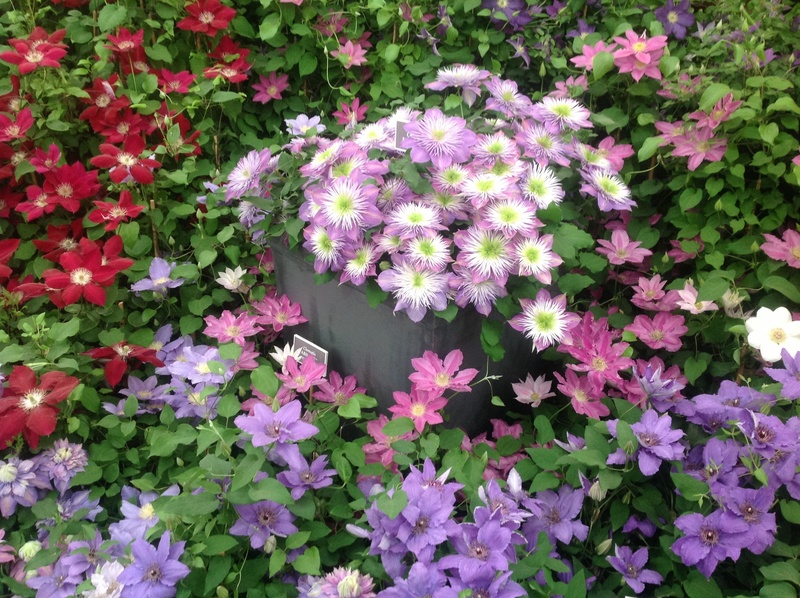Revolutionize Your Garden's Health with 3 Key Weed Control Tips
Posted on 04/07/2025
Are you ready to transform your garden into a thriving, weed-free sanctuary? Let us guide you through a comprehensive journey to a healthier, more vibrant garden by mastering weed control. Learn how to effectively suppress weeds, promote soil health, and give your plants the competitive edge they deserve. Discover below the 3 game-changing garden weed control strategies that will revolutionize your gardening experience.
Why Effective Weed Control is Vital for Garden Health
Weeds are not just an eyesore; they are aggressive competitors. Left unchecked, they can deplete your soil's nutrients, harbor pests and diseases, and stifle the growth of prized plants.
Implementing a strategic, multi-layered approach to weed management not only boosts your garden's health but also:
- Improves soil fertility by reducing competition for nutrients
- Enhances water availability for your cultivated plants
- Lowers the risk of pest and disease infestation
- Decreases the labor intensity of maintaining your garden in the long run
Let's explore the three most effective weed control tips that professional gardeners swear by.

1. Cultivate a Healthy Garden Ecosystem Through Mulching
Mulching is a revolutionary weed control technique that synergistically improves soil and suppresses unwanted invaders. By covering exposed soil with a protective layer, you both block sunlight (which weeds need to germinate) and foster an environment where your garden plants excel.
Types of Mulch for Maximum Weed Control
- Organic Mulch: Wood chips, shredded bark, straw, composted leaves, grass clippings
- Inorganic Mulch: Landscape fabric, black plastic sheeting, gravel
Each type of mulch has unique benefits:
- Organic mulch feeds the soil as it decomposes, inviting beneficial microbes and earthworms.
- Inorganic mulch is perfect for tough-to-weed spaces, walkways, or around perennial plantings.
How to Apply Mulch for Optimal Garden Weed Suppression
- Clear the area: Remove any emerging weeds before mulching.
- Choose your mulch: Select a type suitable for your plants and climate.
- Apply a layer (2-4 inches thick): Spread evenly, but avoid direct contact with plant stems to prevent rot.
- Replenish as necessary: Organic mulches break down over time and may need topping up each year.
Mulching acts as the first line of defense in your integrated weed control strategy.
Pro Tip:
For even more robust protection, lay down newspaper or cardboard under your mulch to further block weed seeds and reduce sunlight penetration.
2. Master Manual Weeding with Smart Techniques & Tools
Hand-pulling weeds might sound traditional, but when executed with precision and the right approach, it becomes a powerful weed management solution. Not only do you avoid chemical herbicides, you also keep your garden ecosystem balanced and healthy.
Timing is Everything: When to Pull Weeds
- Weed after rain: Moist soil makes it easier to remove entire weed roots.
- Act early: Uproot weeds before they set seed to prevent future outbreaks.
- Be consistent: Regular, quick weeding sessions prevent backbreaking cleanup efforts.
Proven Manual Weed Control Tools:
- Hand trowel: Excellent for digging deep-rooted invaders like dandelions
- Hori-Hori knife: A multipurpose Japanese garden tool for precision cutting and uprooting
- Weed puller or fork: Designed for fibrous, spreading weed roots
- Hoe: Fast, efficient option for surface weeds in vegetable or flower beds
Manual Weeding Best Practices
- Remove entire root systems: Partial removal often leads to regrowth.
- Dispose of weeds properly: Especially if they have developed seed heads; do not compost unless you have a hot compost system.
- Inspect regularly: The key to lasting weed suppression is maintenance--spot-check your garden weekly.
Manual weeding remains a cornerstone of natural weed suppression--especially in combination with the other strategies detailed here.
3. Harness the Power of Preventive Planting and Ground Covers
Prevention is always better than cure. By cultivating intentional ground covers and establishing dense planting patterns, you create a living mulch that naturally outcompetes weeds for sunlight, water, and nutrients.
Best Ground Covers and Companion Plants to Outsmart Weeds
- Clover: Nitrogen-fixing, low-growing, and quick to establish
- Vinca minor (periwinkle): Carpet-forming, shade tolerant
- Thyme: Fragrant, flavorful, and resilient ground cover
- Creeping oregano or chamomile: Aromatic herbs that double as weed barriers
- Sweet alyssum: Pollinator-friendly and effective at crowding out annual weeds
- Pachysandra or ajuga: Shady space specialists
By planting living ground covers or densely packed ornamentals, you minimize the open soil that weeds crave.
Companion Planting for Weed Management
Some plants have natural weed-repelling properties, or can shade out weed competitors. Consider these strategies:
- Interplant fast growers: Lettuce, radish, and spinach create instant shade and limit weed seed germination.
- Use tall crops as living trellises: Sunflowers, corn, or pole beans can provide shade and reduce weed vigor beneath.
How to Implement Preventive Planting
- Assess your garden beds: Identify bare or thinly vegetated areas.
- Choose appropriate ground covers: Select varieties that match your soil, climate, and sun exposure.
- Plant densely: The closer your chosen plants, the less real estate for weeds.
- Monitor and adjust: Fill gaps over time as needed to maintain a thick living barrier.
Vigorous, intentional planting is a long-term weed control solution that improves soil, attracts pollinators, and creates a luscious garden ecosystem.
Bonus Weed Control Tips & Advanced Strategies
Once you master the three main techniques, consider these additional ways to resist weeds and protect your garden's health:
- Solarize soil: In new or highly infested beds, cover soil with clear plastic to harness the sun's heat and kill weed seeds before planting.
- Avoid disrupting soil unnecessarily: Tilling brings dormant weed seeds to the surface. Practice minimal disturbance gardening where possible.
- Water wisely: Deliver moisture directly to plants with drip irrigation or soaker hoses to avoid feeding thirsty weed seeds.
- Regular garden checks: Early detection and spot treatment nip weed outbreaks in the bud.
- Utilize cover cropping: Busy in the off-season? Plant rye, buckwheat, or vetch as green manure cover crops to suppress weeds and feed your soil.
- Maintain healthy lawn edges: Keep turf thick and well-fed to prevent invasive weeds from creeping in.
- Practice crop rotation: Break weed and pest cycles in the vegetable patch with smart annual crop movement.
Eco-Friendly and Chemical-Free Weed Management Approaches
Natural weed control options are safer for pollinators, pets, and your family. Explore these organic approaches for a holistic touch:
- Boiling water: Pour directly on weeds in paths or cracks (avoid valuable plants).
- Homemade vinegar sprays: Effective but non-selective--use with care.
- Flame weeding: For driveways or patios, a flame weeder can quickly scorch annual weeds.
Always use precaution, and remember that integrated weed management using the 3 key control methods above yields sustainable and lasting results.

Frequently Asked Questions About Modern Weed Control
What is the most effective way to keep weeds out of a garden?
Combining mulch, regular weeding, and preventive planting offers the greatest success. This integrated weed control strategy blocks weed germination, catches new invaders early, and fosters a robust garden ecosystem.
Can mulching kill existing weeds?
Mulching can suppress many existing weeds, especially annuals, by cutting off light and air. For perennial weeds or established root systems, clear and remove by hand first for best results.
How often should I weed my garden?
Inspect your garden at least once per week during the growing season. Quick, regular weeding prevents seed development and reduces the burden of removing large infestations later.
Is manual weeding better than using herbicide?
Manual weeding is safer and more sustainable, particularly for edible gardens and pollinator habitats. Chemical control should be a last resort, used with care.
Conclusion: Transform Your Garden with Smart Weed Control
Revolutionize your garden's health with these essential weed management tips. By prioritizing mulching, mastering physical removal, and leveraging strategic planting, you empower your soil, conserve water, and give your plants the healthy start they deserve. Begin integrating these proven weed control strategies today, and watch your garden flourish--greener, lusher, and more resilient than ever before.
Remember: The foundation of a beautiful garden is healthy, weed-free soil. Commit to proactive weed management, and enjoy the vibrant results all season long!

